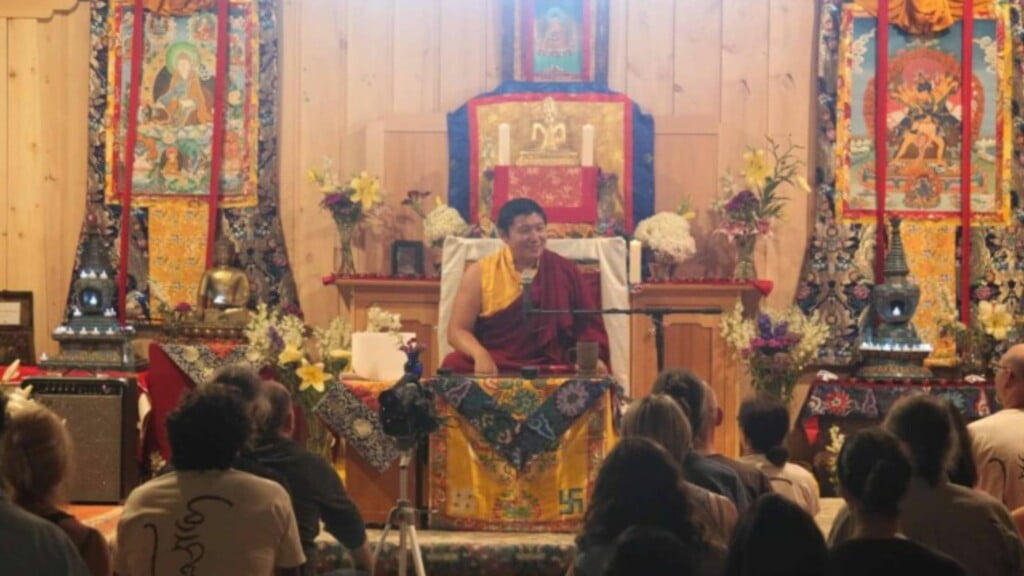What’s the purpose of meditation? In this teaching from the August 2015 talk at the Mahamudra retreat at Samye Hermitage New York, Phakchok Rinpoche explained the purpose of meditation practice. Here he stresses that we can familiarize ourselves through direct experience with the four qualities of our true mind nature.
Four Qualities
- Peaceful
- Compassionate
- Perceives purely–sees things as pure
- Ultimately free of thinking
Regular Recognition Leads to Pure Perception
We come to understand and become confident in these four qualities. But it requires some work. We habituate ourselves to the recognition through practice–it is not enough to know them intellectually. And as we continue to practice, we will see these four qualities manifest.
Pure perception is not something we create. Yet, we can learn to see things as blessed. However, when we have judgment and comparison, developing pure perception is very difficult. We cannot “produce” pure perception by forcing or by pretending. Instead, we must relax and realize the natural qualities of the mind. Rinpoche explains how we can “flip” things around immediately if we have the habit of recognizing this pure quality.
Most importantly, we will realize freedom from thoughts and experience true peace. And we will then be beyond ego-clinging, hope, and fear. Rinpoche advises us to relax and not to carry hope and fear into our practice. These hopes and fears make it difficult to recognize our mind nature, true freedom.
Natural Great Peace

We can appreciate this true peace when we reflect on the words of Rinpoche’s own meditation master, Nyoshül Khen Rinpoche ( Nyoshül Khenpo Jamyang Dorje 1932-1999). Here’s a beautiful poem :
Rest in natural great peace this exhausted mind,
Beaten helpless by karma and neurotic thoughts
Like the relentless fury of the pounding waves
In the infinite ocean of samsara.
Rest in natural great peace.










Responses
Once again, this is so helpful in my practice as it reminds me what to strive for. There is so much going on day to day that our minds are always trying not to be peaceful.